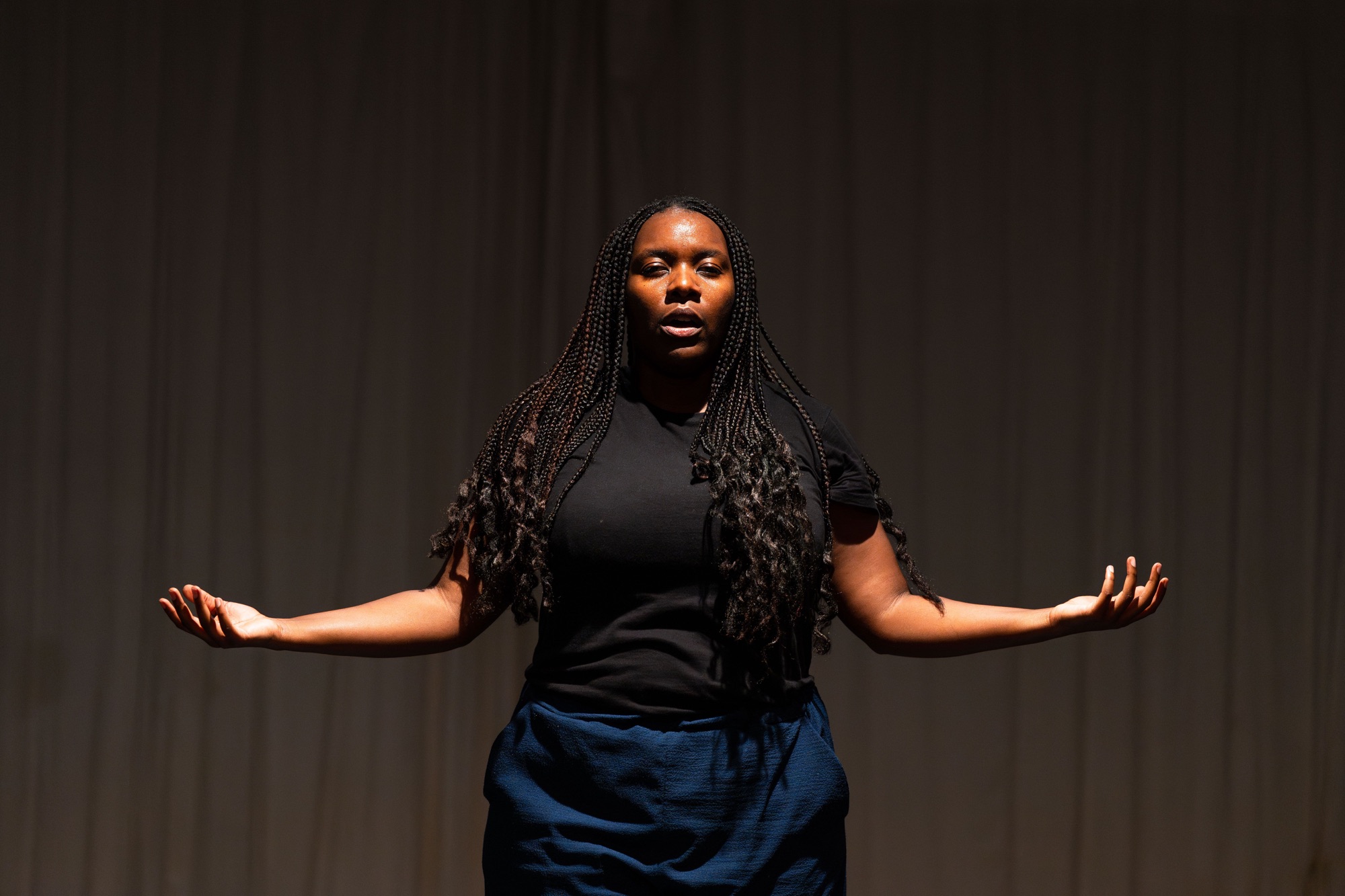Words by Francesca Matthys.
Touch Wood is a gift of an opportunity where choreographers get given time and space to research a choreographic idea in a safe studio at The Place. The MC of the night J Neve Harrington shared the fascination with how one can work in a building and not have a clue what is going on in the many studios that house many artistic, both developing and established minds.
The two-part programme of Touch Wood was definitely a testament to the multiple ideas that flow continuously through our creative ether, offering artistic revelations that are beyond our imaginations.
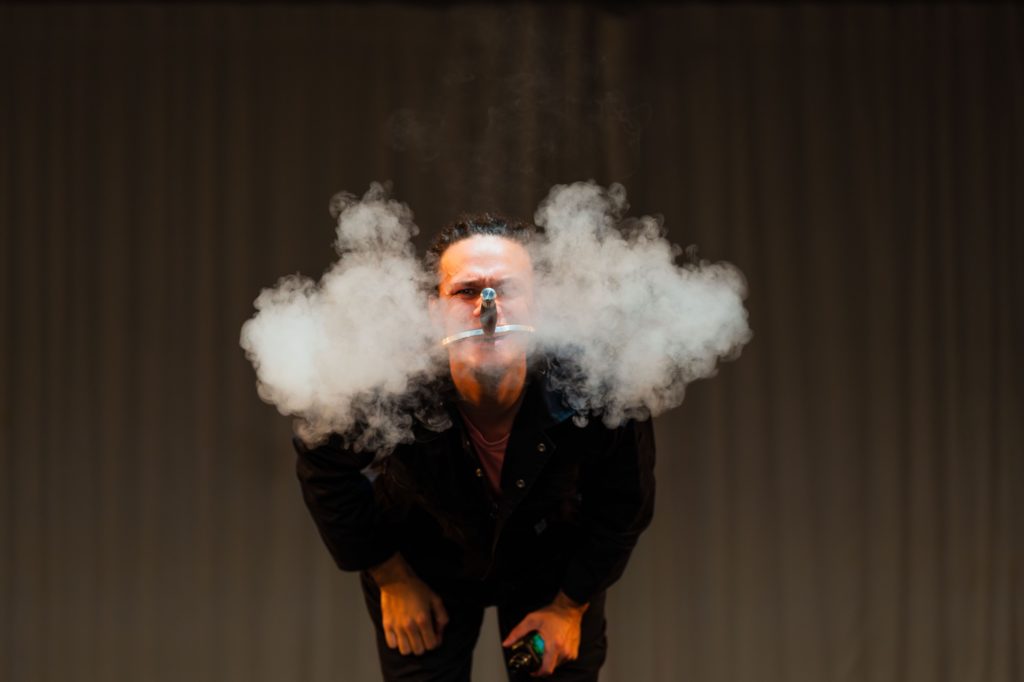
Tom Cassani did exactly that by sharing with us their practice on sword swallowing, self taught, dangerous and extremely nerve wracking. Their offering held quirky moments that fused detailed musical choices and seduction. The performance felt like it had begun right from the moment Cassani stepped in-front of us and began sharing their journey. Sharing that they were interested in bringing things learnt in private to the foreground. Perhaps even revealing emotions in us that we may not have expected to feel in our comfortable theatre seats. Cassani moves through subtle body gestures alluding to status and power relations, referencing imagery of being knighted by a monarch and having your fate in the hands of someone or something else, in this case the danger of the sword. Cassani’s offering is layered with a peculiar dramaturgy that draws us in with humour and stylised choices around music and text, displaying the human body as resilient and multifaceted. I am very curious to see how these subtle gestures expand into full choreographic expressions.
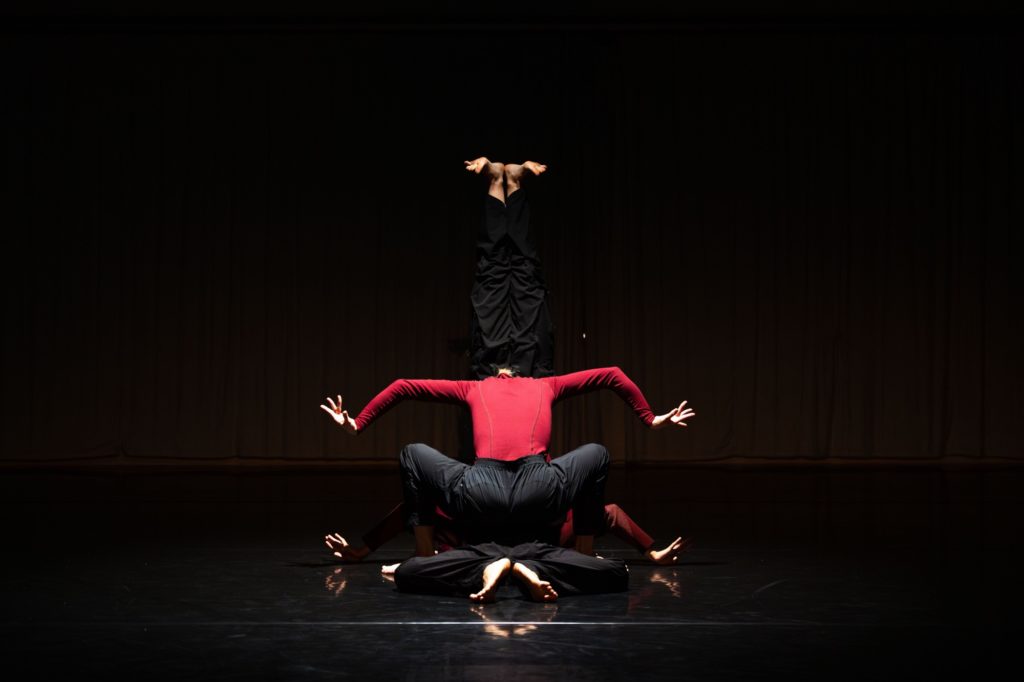
Ekleido, a duo made up of Hannah Ekholm and Faye Stoeser, offered a work with a very intricate opening. Together with Jaspar Narvaez, they displayed visions of sacred gods and goddesses with multiple limbs. Weaving in and out of each other these dancers showed extreme focus and dedication to their craft especially through their slick and mesmerising unison. Inkblots have been historically used as ways to diagnose or analyse various psychological states and identifying spiritual references in this work is a curious reality of relationships between the mind and soul.
Dorine Mugisha bursts onto stage with a vibrant and enthusiastic demeanour. We want to watch her and stay present with her as she hints at parts of her identity and where she has transported us to. As she begins to move, her storytelling is cleverly fused with traditional Tanzanian dance styles, hip hop/street dance styles such as krumping, locking and voguing. Her warm performance presence embeds audience interaction with a familiar ease that holds us throughout her offering. This work in process is filled with many shifts in tone and mood, a memorable one framed by a French song and reimagining of sentiments by French far-right politician Marie Le Pen, transforming derogatory words used against immigrants to France. A moment of strength and empowerment for an artist navigating her diverse upbringing and the discrimination that may come with showing up in spaces as their true self.
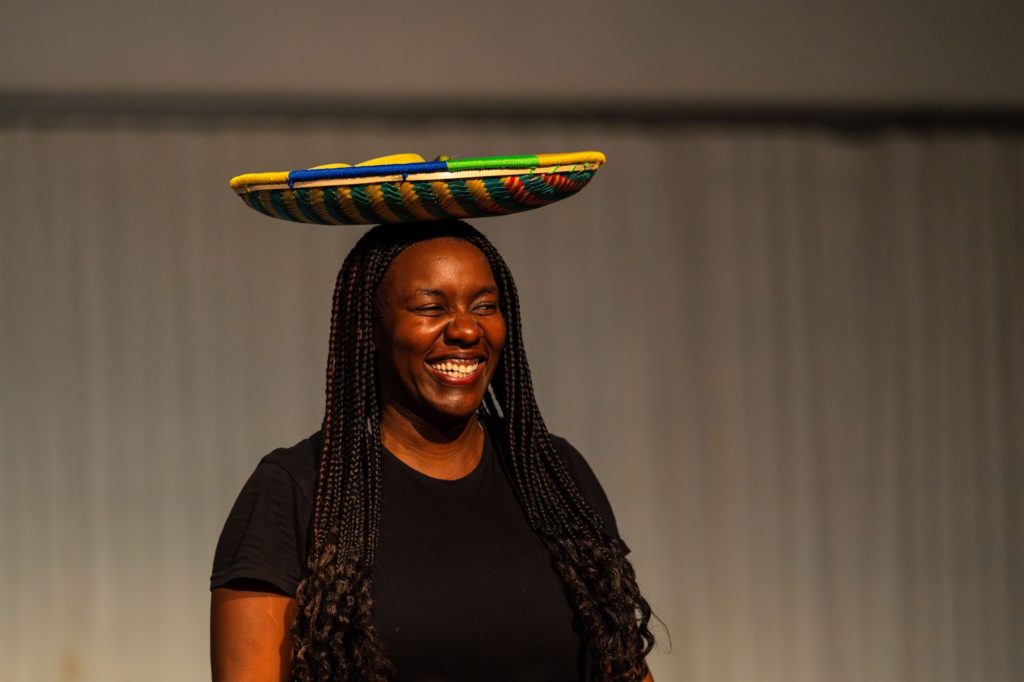
Brooke Milliner’s work pitched at audiences 11-14 is almost like a dance theatre reimagining of Harry Potter, with an inclusive twist. The work playfully engages with how one’s differences can make us unique and be the portal into our superpowers. This dynamic and vibrant work uses street dance and musical score to create a slick video-game-like aesthetic that is satisfying to watch. Each character’s own unique movement style aids to the overall rich tapestry of this work. Considering that the work was well received by an audience of adults, I imagine that it will have an even more significant impact on an audience of young people.
Touch Wood as a platform is not only a space for choreographers to test their ideas but also an opportunity for their work to meet an audience and be offered constructive feedback on their works in process. The Das Arts Method used was a brilliant way to engage audiences in a feedback process but to also create space for dialogue to occur immediately after the performance and with the dance artists.
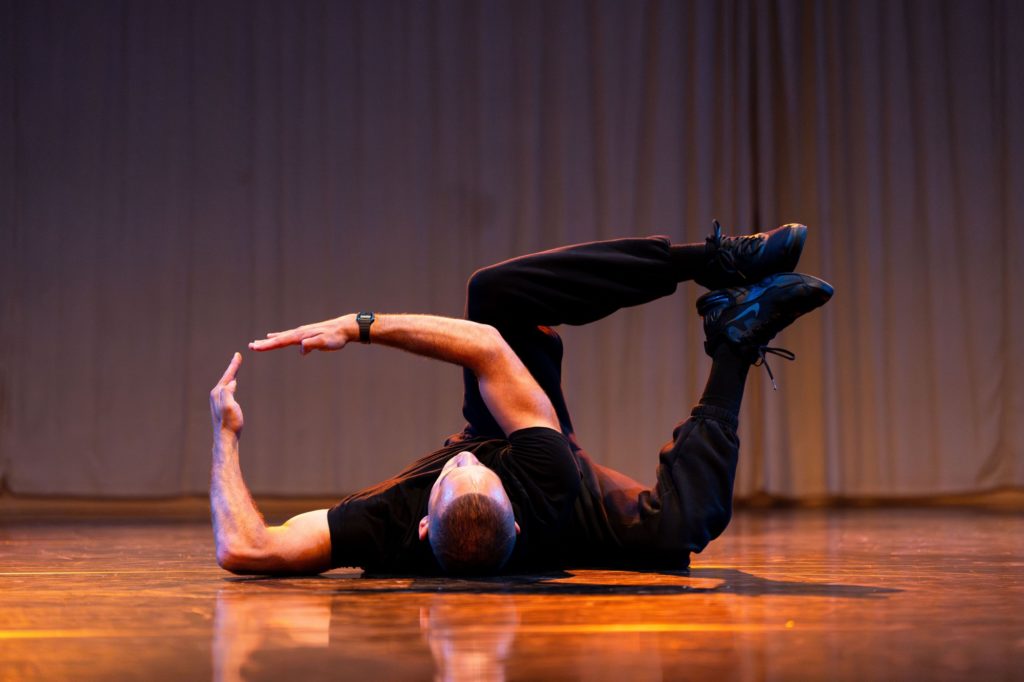

The second night of Touchwood began with Eli Lewis and Joe Garbett‘s work Plue, a queer disappearing act, observing queer visibility and intimacy. There are many things that this work made me think of, the distinct pink and blue costumes perhaps a subtle reference to the trans and bi-sexual flags. The clear lines between colours in costume perhaps representing clear boundaries within the self or even between the self as one experiences oneself and the self as perceived by society. The falling and solid tumbling movements in the work also creating images of bouncing lego after being thrown. Paired with movement that alludes to cradling and seeking comfort, I wonder whether this work is also in honor of the queer inner child and their journey into society, a journey of becoming.
Jackie Kibuka’s work, like Milliner’s work on night one, also offers a narrative based form of storytelling about the life of her paternal grandfather. The text ‘my wife, my life, my children and my land’ performed by one of the performers during the work, is etched in my memory as what encapsulates the work. The weaving in of personal and political histories is always something I find effective when done well and this work is certainly on its way to executing this in an accessible and engaging way. Jackie’s work fuses physical theatre, alongside multiple dance styles in conversation with the rhythms of Uganda, to create a rich landscape for very pertinent stories to be told. The work’s diverse artistic lineages also make me wonder about the historic connections between traditional cultural practices and contemporary dance practices, and how the past has and continues to inform the present.
Aishwarya Raut‘s work relied on the dynamic physicality and chemistry between the two bodies on stage. The duet portrays a very intimate relationship inspired by the myths of the Maharashtra region in India around fertility and desire. Raut almost portrays the female spirits she grew up learning about in folktales who had passed away and came back to avenge their pasts. This fierce independence and strength is clearly seen in the duet that presides over the divine feminine. This intimate and virtuosic duet engages in sophisticated weight transfers, and commitment that captivates us in a trance.
On trance and commitment, Isaac Ouro-Gnao and his collaborators delve very deep into the chronicles of mental illness in Black men and boys. Their exploration is not a didactic one, which can often be done with this subject matter, but a very cohesive and cathartic exploration that allows for a unique storytelling language to be born before our eyes. The commitment to the opening using breath and conjuring an intense state is admirable and sets the very deep tone of the work. Their expansive breath that activates the diaphragm increases blood oxygenation as well as relaxes the self holistically. This practice of breath felt as if the performers were self soothing or tending to something inside and we are given time to relish in this alongside the performers. Like in Ekleido’s work, it acknowledges that psychology and spirituality are in fact intertwined. As the performers kneel before us it is reminiscent of kneeling in front of elders, traditional healers or even one’s ancestors in various African traditions, as a form of respect, seeking guidance. As the origins of this work comes from interviews with Black men between the ages of 7 to 65 I wonder about the potential of intergenerational healing of mental illness, serving both past and present peoples.
The entire programme made me curious about how we use text alongside or integrated within the language of the body but also served as a reminder of how the dance landscape in the UK truly is a smorgasbord of interests and styles that continue to develop, the more investment is put into the development of artists.
